The Artist Olaug Vethal
“First is speed in execution. This was very important for Olaug, for she wanted her art to record the immediacy of what she felt towards a particular subject or mood at a particular unique moment in time.”
“The second quality is freedom, for she wanted to reduce premeditation as much as possible as a consequence of the first characteristic.”
“Thirdly, her work is about energy translated into concrete forms, whether the subject was nudes, bathers or whatever.”
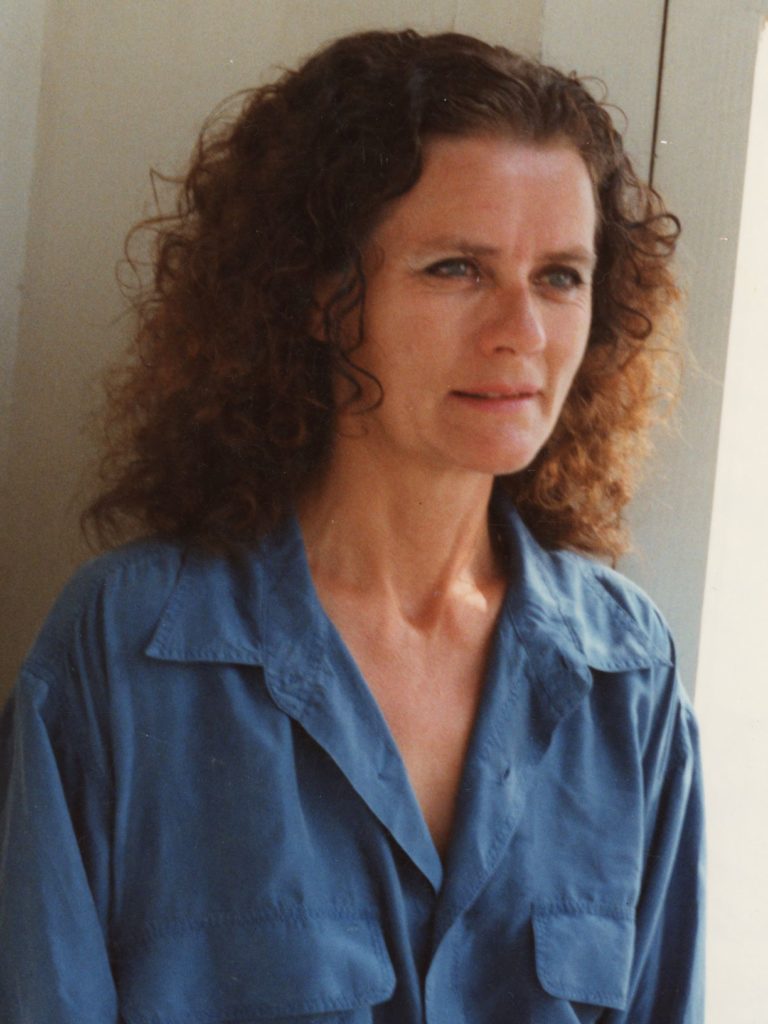
Olaugs World
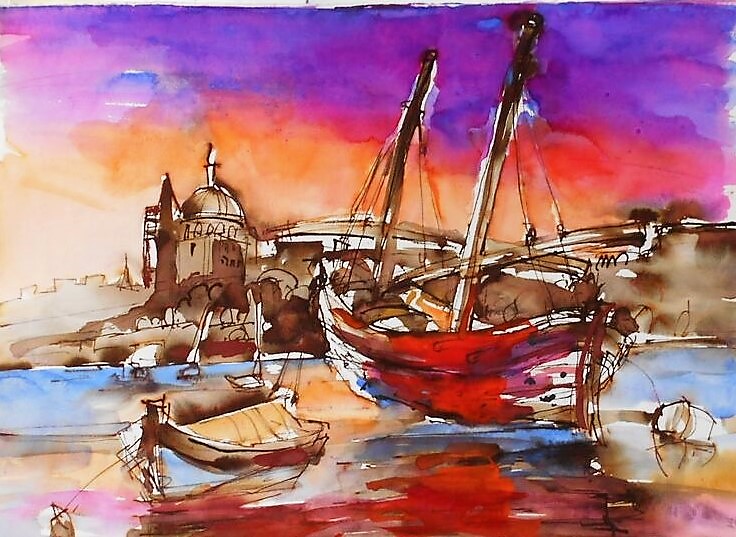
Picasso once visited an exhibition of children’s drawings and remarked stated “When I was their age I used to draw like Raphael, but it has taken me a whole lifetime to learn to draw like children”.
When one looks at Olaug Vethal’s art, he would understand exactly what Picasso was trying to say. A true appreciation of her work would lead to an understanding of the amount of time and work she put into them over the years and of her constant struggling to get it just right. This does not mean capturing an exact likeness but capturing the”spirit” of her subject.
Olaug Vethal (1946-2007) was one of the most prolific artists on the island. She completed several action paintings; known to the German Expressionists like Kandinsky as `tachisme’ (deriving from the word ‘tache’ – meaning blot, or stain), and also used by Abstract Expressionistic artists iike the American Jackson Pollock. Anion- painting involves a real process of thought, an expression, or inner necessity through symbolic form. To do this Olaug was often seen painting away on the beaches, or amongst villagers. She was, in fact, tackling the forms in the subjects around her, through symbolic forms of line and colour that, together, formed the shapes of subjects around her.
When one looks at these works, one can immediately point out the movement of the subjects being portrayed.
Amongst the wide range of subjects for Olaug’s paintings we find her bathers, tribes, Maltese temples, jazz musicians, dancers, villagers, portraits and figures. When describing her work Dr Joseph Paul Cassar wrote that the freedom of her colours and brushstrokes ‘communicate the spontaneity of her process of instant decision making, the application without fear of constant alterations as she works, transforming in the end the whole image : Dr Joseph Paul Cassar (2006)
I have been privileged to have been taught art by Olaug during my Sixth form years at De La Salle College and again, privileged to have had the opportunity to have her as one of my permanent gallery artists. She has been a great inspiration to me and I have learnt so much about art through her works. It was at the end of her years that she started to take on a different process of thought that reflected the way that she painted- her knowledge of her fatal illness brought her in touch with her inner self and that of the Meta physical. Hence, she wanted all to know that she was a ‘Meta Physical’ artist.
by Christine X
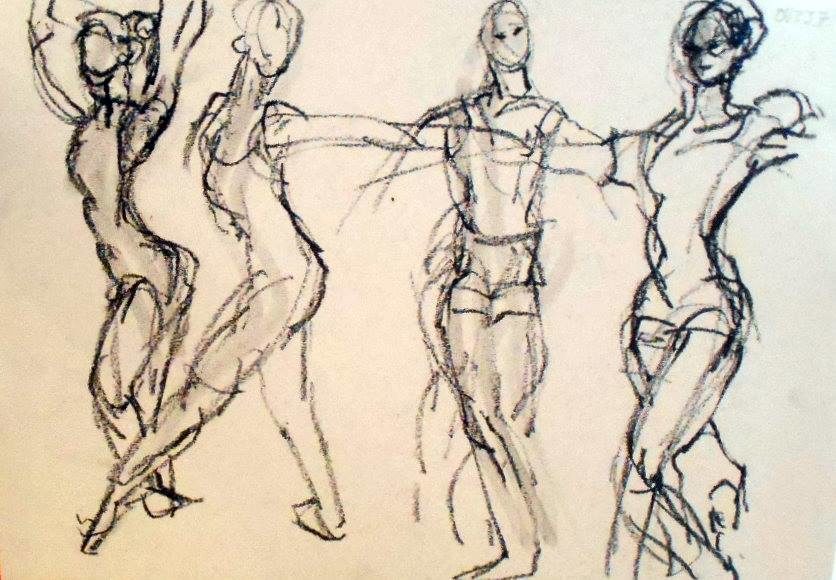
During the course of her artistic career, Olaug Vethal produced a remarkable great number of works reflecting her strong sense of observation, artistic skill and ability to express her emotions in a spontaneous manner. She was a prolific and tireless worker and kept experimenting with mediums and working on different themes until her last days before her demise. Vethal was well known for her expressionistic style, and instantly recognizable for her fearless use of vibrant colours and the unrefined energy that her paintings convey. Her repertoire was mostly based on figurative work but included studies of landscapes, seascapes and anything which struck her imagination from the surrounding environment.
For most artists, the nude has always been an important and sacred object of study. Vethal mastered the human figure when she was a student studying at various art academies in Norway and Germany. Her nude studies vary from sketches of -quick short poses executed with a few lines and washes of paint achieving the right proportion and form to more detailed studies done with accurate precision and toned down by a slightly sensual touch of charm. Yet, the colours remain the same, bright, bold and eclectic.
Throughout the years Vethal also executed a number of interesting portraits. In this selection we find some thought provoking works which at times tend to send an indirect message to the viewers, sarcastic and humane; a visual statement mostly done with unknown subjects. An excellent example is a portrait of a nude male torso with closed palms, as if in meditation or prayer, holding two cigarettes in the mouth and a cigarette in each ear. It is a warning message about the dangers of smoking or simply a psychological manifestation of the existential quest of the human being.
I remember Olaug Vethal also actively working with two other artists, Jeni Caruana and Ebba von Fersen Balzan during the nights of the Malta Jazz Festival. Each year these artists produced a large number of paintings and drawings, inspired by the lively atmosphere of the crowd, lighting and sounds coming from the bands made up of well- known international jazz musicians. The paintings were usually exhibited after the jazz festival in different venues in Malta and also abroad. In this ‘tribute exhibition’ we find three jazz paintings showing the ability of the artist to synthesize with multicoloured brushstrokes the figures of the musicians capturing the very depths of their spirits. These paintings look like an explosion of colours, with echoes of lines and volumes in movement .
Abstraction was natural in the formation and process of Olaug Vethal’s artistic journey. Vethal had a rigorous academic background and so she was able to create works dependent on design fundamentals: form, colour and composition. Her expressionistic style explored the relationship between man-made structures and the natural world and then these images were translated into a more pictorialization of her emotions. In her abstract paintings one finds fluidity and economy of colour depending mostly on the mood or theme the artist worked on. Once in my writing about a critique of her work, I stated that ‘like most abstract expressionists, Vethal concentrated on the act of painting itself. She ignored completely the preconceptions of the realistic visuals and applied paint with a maximum of spontaneity that the images she created were an expression of the deepest level of her unconscious.” This reminds me of what Wassily Kandisky wrote in his famous book Concerning the Spiritual in Art, “that painting like music, should not be a description of the external world, but rather contains its own reality, which comes from the ‘inner necessity’ of the artist – the inner artistic vision!’
Vethal participated in many personal and collective exhibitions in Malta and abroad. Worth mentioning are two important collective exhibitions held in 1999 and 2000, II Mara at Westin Dragonara, Malta and Seven Women Seven Temples, at the Auberge de Provence, Valletta. During this period interest in Malta’s prehistoric culture started to increase and many local artists were trying symbolical imagery related to the temples. Vethal was always interested ancient cultures and the life of the ‘primitives: In temples’ exhibition she had the opportunity to work in situ with the other artists in some of the tempIes. In fact part of her project was to work directly inside the temples, so that the artists would experience the mysterious aura of the place and value the remarkable power of the sacred atmosphere. These artists claimed that they experienced a kind of ‘energy’ while working inside the temples. In the exhibition catalogue Vethal stated: “I can feel that I am absorbing energies from my surroundings and reformulate these onto my chosen artistic medium in terms of free drawing and flowing paint, luminous colour and semi abstract reflections:’
It seems that, in recent years, modern and contemporary artists are returning to the more ‘primitivistic’ aspect in the way they express themselves. They find creative truth in the archetypal world of the ‘primitives: Art has become inclined towards a radical spiritualism that explains the mysterious forces of life and death.The dissatisfaction with society, the dominating element of materialism of the ‘outer’ world, and the decadence of the cultural canons of our values has led to an inward psychic expression. I argue that this was clearly expressed in Vethal’s works. If we look at the examples we find in this exhibition one notices that there is a strong primitivistic impulse and an animistic and mystical sensibility.
I am sure that Olaug Vethal’s legacy will remain alive in the hundreds of drawings and paintings she produced during the years of her career. Vethal is an incomparable artist who followed her ‘inner call’ to create what is beyond the ‘visible’. She was also a great mentor and teacher and an inspiration to many students and artists who worked with her.
by Dr. Louis Lagana
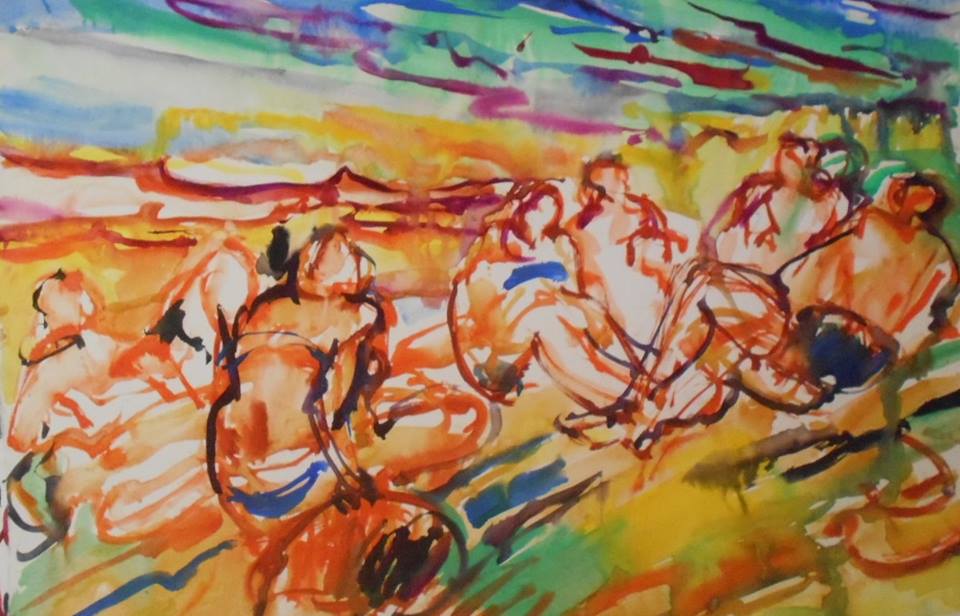
The fate of an artist shales an uncanny resemblance to that of a philosopher. Very often, the artist – much like the philosopher passes away before the impact of his (or her) work is truly felt and appreciated. But perhaps this is not just a coincidence. As Jacques Derrida once remarked, ‘the dead – a dead parent, for example – can be more alive for us, more powerful than the living. It is the question of ghosts: Much like a ghost, one can assume that upon leaving this world an artist leaves behind a certain effect: one which affects other individuals in ways which it did not when the artist was alive.
Relative to this, one may then inquire into the difficulty of speaking about the simple ‘death’ of Ms Vethal: not only because her living presence can be felt in every single painting hanging in public and private spaces, but also because every singular mark on het canvases reflects her life and thoughts. As a result, the mark – which, until recently, has been understood to be representing death – becomes the sign of life.
Olaug’s artwork reflects the unmistakable presence of spontaneity, passion and life. Yet the people who knew her would understand exactly why this is the case. Much like her work, Olaug was outspoken and passionate; a genuine free spirit. Her work has an instantly recognisable force to it, which emanates from the canvas and draws the viewer into the subject matter. Olaug’s work is a constant attempt at reinventing herself, and it is exactly this attitude that admire most about her. She was never willing to give up and settle for what she had already accomplished, and even though she frequently stated, “I am so grateful!” she still had to live her share of difficulties and strife in life. Yet one certainly has to admire the fact that she always found ways of reinventing herself through her work and think outside of the box. This element certainly shines through in her work. Relative to this, one may recall Nietzsche’s famous ‘existential’ thoughts where he stated that a remarkable life is not marked by what one has to deal with, but rather by the ability of transforming every negative element into a positive, outcome.
I shall thereby end this short train of thought by going back to where it had originally started, namely, the issue of life and death. Olaug’s work reflects an unmistakable tension between life and death. On the one hand, her intense colours and bold brush strokes reflect a deep yearning for life; while on the other hand, the prolific nature of her work reflects the awareness of the eventual end of all humans. This tension can be paralleled to her philosophy on life: on the one hand, her outspoken, passionate and freethinking character is a celebration of her life; while on the other hand, these qualities are the product of her ability to transform the awareness of her mortality into something beautiful.
By Niki Young MA. Philosophy
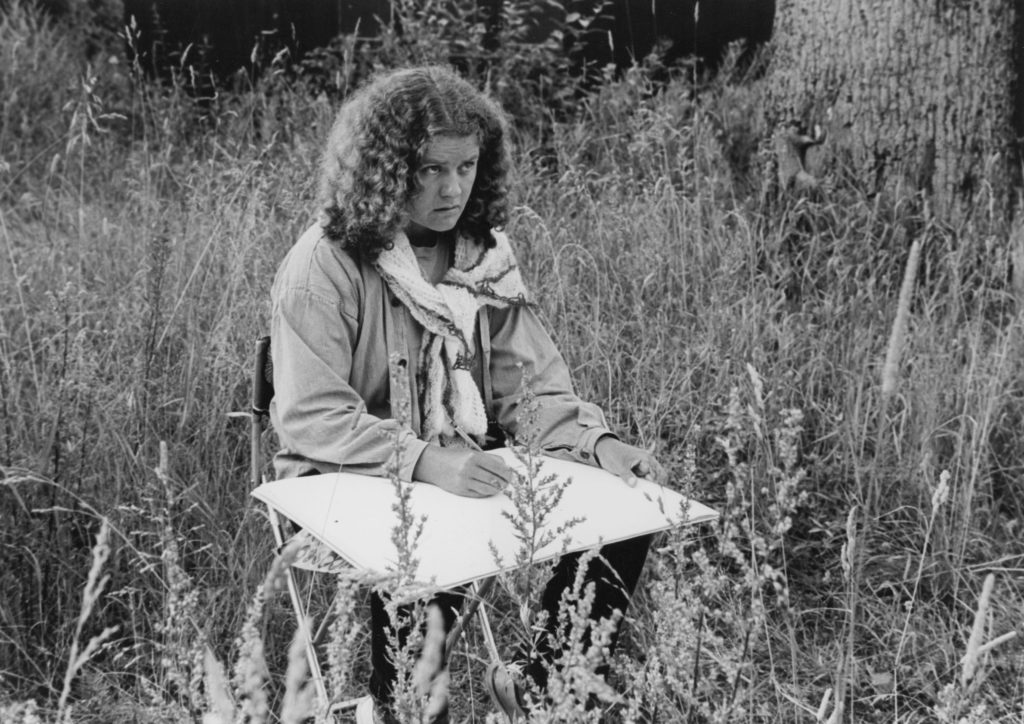
I am honoured – I bow my head It gives me particular pleasure to have been asked to open this exhibition. I stand here with my self-confidence boosted. But why? Because I have, in the past, been accused of being old-fashioned and trying to re-create the past. It is true that I am old fashioned and that I try to re-create the past – but I also am a lover of modern art.
I love creativity at any period in time. I am devoted to talent, originality, imagination, inspiration, ingenuity and resourcefulness. I rarely like gimmick – gimmick can be very boring. Olaug’s work may be a lot of things, but it’s certainly not boring neither is it gimmick. Look around you; she seems to be in a hurry. She has so much to say. Her style is developed, her handwriting is recognisable, some of her pictures seem as though they could join up, hold hands and become triptychs or polyptics – maybe they can, others not. Olaug passes the final test. Her work is valid, it works. How do I know?
I have a wonderful picture of Olaug’s – a bustling Paceville where there are cranes, beached boats, parked cars, people, balconies, a bit of sea, fruit and vegetable stalls and whatever. We know these pictures. Now for the challenge – It was like water on a duck’s back – she was as buoyant as ever: I commissioned her to paint some empty rooms – an office that had been and was now empty. No problem! She created, she composed – she used what she could. An electric fan, some cangatura, persiani – her colours became muted as though in tribute to something that had been something – she pulled it off. I love the picture, I shall hang it in my study; I want to look at it every day.
I hope she will paint more portraits – here we have a problem – she is not really a flatterer – so what! If you want a photograph of yourself, then go and have your photograph taken. If you want to sit for a work of art our artist might pull it off.
Olaug was one of us – she was married, lives and teaches here. She was Norwegian and has clearly enjoyed mushing within a clash of cultures. She has contributed, she has received and she has acquired. She was at the peak of her powers with experience and confidence to sustain her.
Her work is in pencil, ink, pastel, watercolour, gouache, acrylic, egg tempera, oils and she also produces dry point and aquatint etchings not to mention her terracotta, ceramics and metal installations. Graduate of the Hamburg College of Design. She has been teaching art and exhibiting her pictures for twenty years. She is a free spirit blessed with oozing talent and a sharp, humble and incisive intellect. Her works are in collections in Norway, Denmark, The Netherlands, Switzerland, Germany, France, the UK and the USA, China, and Malta.
Olaug was painting in Merchants Street a few years back, and I was moved by what I saw – these were not the usual fun pictures – there were people I knew – or I thought I knew – the big tummies – the bored children – no bikinis here – a bit of architecture, always the bustle – .”01aug,” I said, “They’re wonderful!” She then said, “I was just.. “85” and never finished the sentence.
Ladies and Gentlemen, Olaug Vethal was ‘just creating’- let us admire.
by Nicholas De Piro
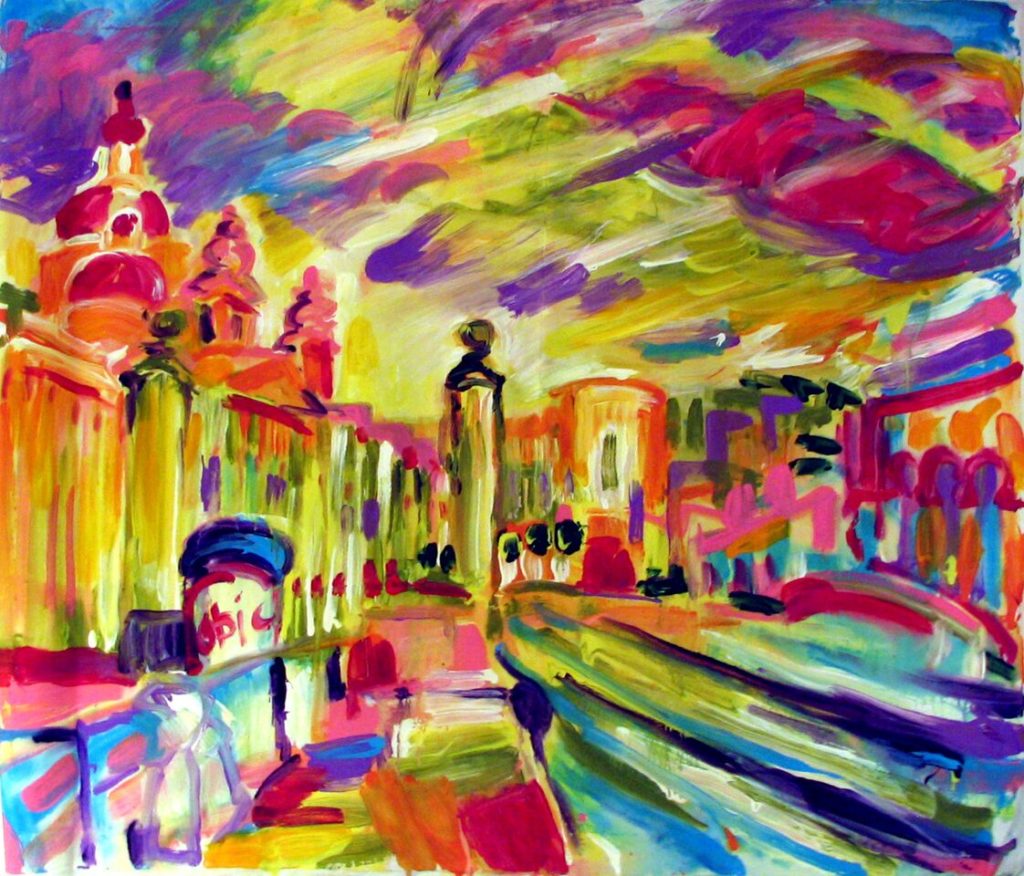
The Teacher Olaug Vethal
I got to know Olaug when she started teaching Art at De La Salle Sixth Form and what struck me and all my colleagues was her outstanding sense of duty and her genuine interest in all the students she taught. I cannot forget how upset she used to be when some of her students did badly in their tests or exams and she used to be close to tears whilst she argued that they were not doing their utmost to reach the potential she was quite confident they had. Olaug’s admirable sense of duty shone through when she used to come to school only a couple of hours after undergoing treatment at Sir Paul Boffa Hospital. She used to come by bus and even though visibly exhausted and suffering she would walk to class to deliver her lecture. My colleagues and past students can surely vouch for this. Olaug was always ready to help out whenever the need arose – be it in helping out in preparing the stage for our annual soiree, in encouraging her students to participate in competitions, or in replacing members of staff whenever they asked her to. Olaug could never say no. Rather, it was she who was always the first to volunteer to help even when her health was rapidly deteriorating_
Naturally there was more to Olaug than just her teaching: she was a lovely person, so vibrant, so warm. She was a remarkable person, a wonderful woman who filled the lives of those who knew her with an unforgettable ray of sunshine. She was someone who simply loved life and loved those that were blessed enough to be a part of her life. There was an ageless quality about her that drew all who knew her, young and not so young to her. All this was reflected in her smile, the twinkle in her eyes, and her genuine interest in all those she knew or came in contact with.
The void her passing has left can never be filled yet she has left something that transcends that void, a goodness and love that knew no bounds. Olaug indeed touched the lives of all of us who knew her in such a special and unique way.
by Dr John Portelli
